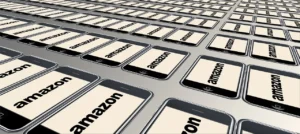In the world of e-commerce, the key to success often lies in your partnerships. For Amazon sellers, wholesale suppliers play a pivotal role in determining your business’s growth and profitability. Choosing the right Amazon wholesale supplier isn’t just about finding someone to fulfill orders; it’s about forging a trusted partnership that drives long-term success. Let’s dive deep into how to find wholesale suppliers for amazon fba in 2025, the platforms to explore, and tips to maximize your chances of success.

Why Reliable Wholesale Suppliers Are Crucial
When running an Amazon FBA business, your supplier plays an essential role in the success of your operation. Without a reliable and efficient supplier, even the best product ideas can falter, causing delays, stockouts, and unsatisfied customers. Finding trustworthy wholesale suppliers is one of the most crucial steps in setting up your Amazon business for success in 2025. In this comprehensive guide, we’ll discuss the importance of reliable wholesale suppliers and how to find wholesale suppliers for amazon fba in 2025.
How to Find Wholesale Suppliers for Amazon FBA in 2025: A Complete Guide
Suppliers are more than just a source for products; they’re strategic partners who can impact your business growth and reputation. How to find wholesale suppliers for amazon fba in 2025 is a key factor in your ability to scale and manage your inventory efficiently. Here’s why working with dependable suppliers matters:
1. Product Quality
Quality control is one of the most important factors in maintaining a successful Amazon FBA business. A reliable supplier will ensure that your products meet your specifications and quality standards. Poor product quality can result in:
- Negative Reviews: Customers are quick to leave reviews, and low-quality products will lead to negative feedback that can harm your product’s ratings.
- Refunds and Returns: Defective products lead to higher return rates, which will hurt your profit margins and damage your reputation.
- Brand Reputation: Over time, low-quality products can tarnish your brand’s image, making it harder to build customer loyalty.
A reliable wholesale supplier ensures that the quality of your product remains consistent, keeping your customers happy and your ratings high.
2. Timely Deliveries
When it comes to Amazon FBA, stockouts and delays can be costly. If a product is out of stock, it means missed sales opportunities and potential lost rankings. Timely deliveries are crucial to maintaining your product’s availability and ensuring that your Amazon listing stays active and competitive.
Here’s why timely deliveries matter:
- Avoid Stockouts: Missing a timely shipment can mean losing out on sales and ranking position in Amazon’s search results.
- Maintain Consistency: Regular, on-time deliveries keep your inventory stocked and allow you to fulfill orders quickly, maintaining a positive customer experience.
- Prevent Negative Feedback: Delays lead to frustrated customers, which can result in negative reviews and damage your seller reputation.
A dependable supplier ensures that your orders are delivered on time, helping you avoid stock shortages and keep your sales flowing.
3. Scalability
As your Amazon FBA business grows, so will your needs. The right wholesale supplier can scale with you, providing the products you need in increasing quantities to meet growing demand. A reliable supplier will:
- Adapt to Demand Fluctuations: They will have the infrastructure to support seasonal or increased demand without compromising quality or delivery times.
- Streamline Operations: A good supplier will be proactive in helping you manage inventory levels and avoid stockouts or excess inventory.
- Expand Product Lines: As your business grows, your supplier may offer additional product lines or variations to help you diversify your offerings.
Having a supplier who can scale with your business ensures that you can grow without encountering bottlenecks or delays that could hinder your ability to fulfill orders.
4. Cost-Effectiveness
Finding a supplier that offers competitive pricing without sacrificing quality is essential for maintaining a healthy profit margin. Reliable suppliers usually offer volume discounts, negotiated prices, and better payment terms, all of which contribute to a lower overall cost of goods sold (COGS).
Why cost-effectiveness matters:
- Maximize Profit Margins: By getting products at a lower cost without compromising quality, you can sell at competitive prices while still making a profit.
- Improve Cash Flow: A cost-effective supplier helps you manage cash flow more efficiently by reducing the cost of inventory and allowing for better financial planning.
- Increase Competitiveness: Competitive pricing allows you to offer better prices than your competitors while still maintaining a profitable margin.
Finding a supplier that provides cost-effective solutions allows you to stay competitive in Amazon’s marketplace while increasing your profits.
Proven Strategies
Now that we understand the importance of reliable suppliers, it’s time to explore how to find them. Finding the right wholesale suppliers for your Amazon FBA business in 2025 requires a combination of research, strategy, and the right tools. Here are some proven strategies for identifying and securing top-notch wholesale suppliers for Amazon FBA:
1. Online Marketplaces
Platforms like Alibaba, AliExpress, and Global Sources remain the go-to resources for finding wholesale suppliers. These platforms connect you with suppliers from around the world, offering a broad range of products at competitive prices.
- Alibaba: One of the largest global trade platforms, Alibaba allows you to search for manufacturers and wholesalers, view reviews, and negotiate prices.
- AliExpress: While typically known for direct-to-consumer sales, AliExpress also offers wholesale pricing for bulk orders.
- Global Sources: This platform specializes in connecting buyers with manufacturers in China and other countries, offering high-quality products and verified suppliers.
Pro Tip: Always ask for product samples before placing large orders. This ensures that the product quality meets your standards.
2. Wholesale Directories
Wholesale directories can help you find a curated list of suppliers who are specifically focused on the wholesale market. Some popular wholesale directories include:
- Worldwide Brands: A large directory of certified wholesale suppliers and dropshipping companies, featuring suppliers from a variety of industries.
- SaleHoo: This directory offers a vetted list of suppliers and wholesalers who are suitable for Amazon FBA businesses. SaleHoo also offers market research tools to help you choose profitable products.
- Doba: A directory that connects Amazon sellers with wholesalers offering a wide range of products for reselling.
Using a wholesale directory allows you to quickly identify trusted suppliers and streamline your supplier selection process.
3. Attend Trade Shows and Expos
Trade shows are excellent for networking with manufacturers, wholesalers, and distributors. These events provide a face-to-face opportunity to meet suppliers, see their products firsthand, and discuss potential partnerships. Some major trade shows and expos to consider attending include:
- Canton Fair: Held in China, the Canton Fair is one of the largest trade fairs in the world. It’s a great place to find suppliers for a wide range of products.
- Las Vegas Market: An annual trade show focusing on consumer goods, fashion, and home décor.
- National Hardware Show: If you sell DIY tools, gadgets, or home improvement items, this event could be a goldmine for finding reliable suppliers.
Trade shows not only help you find suppliers but also provide you with insights into market trends, product innovations, and potential business opportunities.
4. Local Manufacturers and Suppliers
While many Amazon sellers source their products from overseas suppliers, local manufacturers can be a great option if you want to reduce shipping times and support domestic industries. Look for wholesalers and manufacturers based in your country who can supply products for your Amazon FBA business.
Benefits of Working with Local Suppliers:
- Faster Shipping Times: Domestic suppliers can offer quicker fulfillment and shipping, which is critical for customer satisfaction.
- Easier Communication: Working in the same time zone makes communication smoother and reduces the risk of misunderstandings.
- Support for Local Businesses: By sourcing products locally, you can contribute to the growth of businesses in your area.
Use platforms like ThomasNet (for US-based manufacturers) or Maker’s Row (for manufacturers in the US) to find local suppliers.
5. Leverage Social Media and Online Communities
Social media platforms like LinkedIn, Facebook groups, and industry forums can help you find recommended wholesale suppliers. Many suppliers actively promote their products on these platforms, and you can easily contact them directly.
Strategies for Finding Suppliers on Social Media:
- LinkedIn: Use LinkedIn to connect with wholesale suppliers and manufacturers in your niche. Many suppliers maintain profiles on LinkedIn and actively respond to inquiries.
- Facebook Groups: Join groups dedicated to Amazon FBA sellers or specific product niches to ask for recommendations from other sellers.
- Reddit and Quora: Search for or ask about suppliers in specific subreddits or forums. Many experienced sellers are willing to share their supplier sources.
Securing Reliable Wholesale Suppliers for Amazon FBA in 2025
Finding reliable wholesale suppliers for Amazon FBA in 2025 is one of the most important tasks you’ll face as a seller. A trustworthy supplier can help ensure consistent product quality, timely deliveries, scalability, and cost-effectiveness, all of which are crucial for the success of your Amazon business.
By using the strategies outlined above—whether it’s leveraging online marketplaces, attending trade shows, or networking through social media—you can find reliable suppliers who are a perfect fit for your business needs. Remember, the key to success is not just finding any supplier, but one who aligns with your business goals and helps you scale efficiently. Take the time to research and choose suppliers that will support your Amazon FBA journey and help you achieve long-term success.

FAQs
- What is the best platform for beginners? For beginners, Alibaba is the best platform due to its robust supplier verification processes and Trade Assurance feature.
- Can I trust overseas suppliers? Yes, but only after thorough vetting. Look for certifications, reviews, and Trade Assurance options.
- How do I negotiate with suppliers? Be polite and professional. Clearly outline your requirements and inquire about discounts for bulk orders or long-term partnerships.
- What’s the typical MOQ for wholesale suppliers? MOQs vary by supplier and product. Platforms like DHgate and AliExpress often have lower MOQs, while Alibaba suppliers may require higher quantities.
- How can I ensure product quality? Always request samples before placing bulk orders and consider hiring a third-party inspection service for quality checks.
Conclusion
How to find wholesale suppliers for amazon fba in 2025 is a cornerstone of your e-commerce success. By leveraging the right platforms, clearly communicating your needs, and building strong relationships, you can set your business up for long-term growth. Remember, your suppliers aren’t just providers; they’re your partners in success. Start small, stay vigilant, and aim for sustainable growth.













